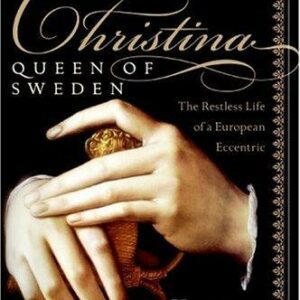Charlotte Brontë
$23.00
| Title | Range | Discount |
|---|---|---|
| Trade Discount | 5 + | 25% |
- Description
- Additional information
Description
Charlotte Brontë famously lived her entire life in an isolated parsonage on a remote English moor with a demanding father and with siblings whose astonishing creativity was a closely held secret. The genius of Claire Harman’s biography is that it transcends these melancholy facts to reveal a woman for whom duty and piety gave way to quiet rebellion and fierce ambition. Drawing on letters unavailable to previous biographers, Harman depicts Charlotte’s inner life with absorbing intensity. Brontë’s blazingly intelligent female characters brimming with hidden passions transformed English literature, even as a heartrending series of personal losses followed the author’s literary success. Charlotte Brontë: A Fiery Heart is a groundbreaking view of the beloved writer as a young woman ahead of her time.
Seattle Times, Best Books of 2016
Kirkus Reviews, Best Biographies of 2016
“As intimate and nuanced an account of the writer’s life as we are likely to get.” —Los Angeles Times
“An engrossing, almost novelistic tale. . . . Just as Jane Eyre happily survives multiple readings, so does the story of Charlotte Brontë—particularly when in the hands of a gifted teller.” —Seattle Times
“A well-researched, wonderfully lucid . . . treatment of a most extraordinary woman. . . . Harman’s tart, understated wit and gift for quotation shine throughout. [Her biography is] perhaps the most engaging of all.” —Chicago Tribune
“A masterly biography. . . . Harman leads readers on a precipitous journey through the writer’s interior landscape. . . . Harman’s psychologically astute portrait deftly bridges Charlotte’s world and her work.” —The New Yorker
“Harman’s well-paced narrative and keen attention to the tentative and troubled way Charlotte adjusted to sudden fame make this latest version of a literary life all the more modern and captivating.” —San Francisco Chronicle
“Excellent. . . . Harman writes with warmth and a fine understanding of Ms. Brontë’s literary significance. Above all, she is a storyteller, with a sense of pace and timing, relish for a good scene and a wry sense of humor.” —The Economist
“[Harman] vividly portrays a life of loneliness, anguish, tragedy, and suppressed rage in serene and elegant prose with frequent flashes of ironic humor. . . . A delightfully engaging biography.” —Kirkus Reviews, starred review
CLAIRE HARMAN is the author of Sylvia Townsend Warner, for which she won the John Llewellyn Rhys Prize, as well as biographies of Fanny Burney and Robert Louis Stevenson, and Jane’s Fame: How Jane Austen Conquered the World. She is a fellow of the Royal Society of Literature and a frequent reviewer. She divides her time between New York City and Oxford, England.
www.claireharman.comPrologue
1 September 1843
It is 1 September 1843 and a 27-year-old Englishwoman is alone at the Pensionnat Heger in Brussels, a girls’ school where she is an unpaid student-teacher. It is halfway through the long vacation and everyone else who has a home or family to go to left weeks ago: the proprietress, Madame Heger, is at the seaside with her husband and children; the other teachers are on holiday or travelling.
Miss Brontë’s home is too far away to warrant a return for a mere two months. She can’t afford the cost of the journey back to her father’s Yorkshire parsonage, and, besides, arrangements should be kept to: Charlotte is a scrupulously dutiful person. But she is finding the empty dormitory oppressive, with all the beds covered in white cloths like a morgue; every meal is eaten alone, and the Pensionnat’s beautiful garden, with its old fruit trees and allée défendue of limes, seems more of a prison than a refuge when the rest of the school is abandoned. To escape the heavy solitude, it is Miss Brontë’s habit to go out and walk the city and the surrounding countryside for hours at a time. “I should inevitably fall into the gulf of low spirits if I stayed always by myself here without a human being to speak to,” she writes to her sister Emily, who was her companion at the school the previous year and knows the place well. The truth is, although she doesn’t tell Emily this, she is already in that gulf. She is desperately unhappy.
Her return to Brussels for a second year at the Pensionnat Heger Charlotte sees with hindsight to have been a terrible mistake, for she has fallen in love with someone who, it is painfully clear, will never see her in a romantic light. It is the headmistress’s husband, Monsieur Constantin Heger, a man of impressive intellect and spirit, the first person outside her immediate family to take her seriously, the first man to treat her as a potential equal. But the thrill of having his attention in her first year, as a pupil, has been followed by misery in the second, as his junior colleague. The Hegers have become wary of Charlotte’s ardour and eccentricities, and much more formal in their dealings with her. And now the man she considered her soul-mate is pretending that she is nothing special to him at all.
She looks in the mirror and sees, with ruthless clarity, a catalogue of defects; a huge brow, sallow complexion, prominent nose and a mouth that twists up slightly to the right, hiding missing and decayed teeth. She looks poor and ill-dressed, haunted and miserable, with none of the brilliant light from her “great honest eyes” that other people sometimes saw, and marvelled at. “[I]t is an imbecility which I reject with contempt—for women who have neither fortune nor beauty . . . not to be able to convince themselves that they are unattractive.” That’s what she had written six months earlier, when her friend Ellen, back home in Yorkshire, had ventured to suggest that there was some romantic motive for Charlotte’s return abroad.
The pain of staying indoors is too much: she sets off along the length of the parc Royal to the porte de Louvain, through the gate and up the long hill heading eastwards away from the city. “No inhabitant of Brussels need wander far to search for solitude,” she wrote later; “let him but move half a league from his own city and he will find her brooding still and blank over the wide fields, so drear though so fertile, spread out treeless and trackless round the capital of Brabant.” Her destination is the Protestant Cemetery in Saint-Josse-ten-Noode, two miles beyond the walls of this predominantly Catholic city, a walk down into the hamlet of Evere, then up to the crest of a hill beyond. There is no church here, just a few dozen graves in a walled garden, heavily overgrown with cypress and yew, with inscriptions in English, French and German: the foreign tongues of alienated people dying far from home.
Charlotte has come to visit a particular grave, that of Martha Taylor, one of the West Riding family who had encouraged her to come out to Brussels in the first place and whose elder sister Mary had been Charlotte’s most admired friend since girlhood. Charming, quirky Martha—a flirt and chatterbox—had been swept away by cholera: the last time Charlotte had been out to visit her grave was just two weeks after the funeral the previous October. Emily had been with her then, and Mary, and all three young women had gone back and spent a strange evening at the lodgings of another English family, the Dixons, in the rue Royale. But even that gloomy day seemed better than this utterly solitary one. The Dixons had all left Brussels now, as had Mary Taylor, and Emily was back home in Haworth.
From the cemetery Charlotte keeps walking away from the city, through valleys, farms and hamlets, to a hill where there is nothing but treeless fields as far as the eye can see. The furthest reach. She has to turn back, but coming into the city in the fading light she finds herself so desperately trying to put off returning to the Pensionnat that she ends up weaving around the surrounding streets to avoid it.
This unassuming-looking woman, tiny, unfashionable, darting out a look but not liking to hold one’s eye, was in extremis.
Passing by the towering west front of the city’s great cathedral, SS-Michel-et-Gudule, and hearing the bell calling the faithful to the evening service, Charlotte Brontë did something strange, unpredictable and entirely uncharacteristic: she followed the worshippers in. The prejudices that she had to overcome even to step inside the door of a Roman Catholic church were considerable; Charlotte, the daughter of an Irish Protestant minister, was, like all her family, ferociously anti-papist. She had been brought up to pity Catholics and to fear them—one of her great sources of discomfort in Belgium was the mere fact of being in a Catholic country, surrounded by a “Romanism” that “pervaded every arrangement.” Her letters from Brussels are full of remarks about the superstitious nature of her Catholic pupils and colleagues, their “sensual indulgence” and the childishness of minds “reared in slavery.” But, on that lonely September evening, she found herself wandering up and down the aisles of the venerable Gothic church and staying to hear the service. When it was over, she was still reluctant to leave and, gravitating towards a part of the cathedral where six or seven people were kneeling, she let herself be directed into a confessional. Explaining this queer whim to her sister the next day, she said, “I felt as if I did not care what I did, provided it was not absolutely wrong, and that it served to vary my life and yield a moment’s interest. I took a fancy to change myself into a Catholic and go and make a real confession to see what it was like.”
The ornate confessionals of Ste-Gudule are still there, guarded by massive wooden angels, with a central box for the priest and kneelers for penitents on either side. Charlotte had to wait at the grating for ten minutes while another confession proceeded in a barely audible whisper just a few feet away. It was a long interval for second and third thoughts to take hold, for the voice of her bigoted upbringing to shout down this strange “fancy”—but she stayed put and eventually heard the communicating grille open and in the half-light saw the priest leaning her way—her cue to begin.
What did she say? In the letter she wrote about the episode to Emily the next day, Charlotte described everything but the substance of her confession: she described the difficulty she had explaining to the priest (in French, of course) what she, a Protestant, was doing in his church at all; she described the priest’s surprise and alarm, and the news that her religion precluded her from enjoying “le bonheur du sacrement.” “[B]ut I was determined to confess,” Charlotte said, and the priest eventually agreed to hear her, reasoning that it might be the first step towards a conversion. Freed by this act of kindness, “I actually did confess—a real confession.” Her sense of relief is palpable.
The object of Charlotte’s unrequited love, Constantin Heger, was a difficult, mercurial character who haunted each of her later novels (as Rochester in Jane Eyre, Louis Moore in Shirley, Paul Emanuel in Villette), and he cost her two years of intense heartache, humiliation and futile hope. But Charlotte was also struggling with the larger issue of how she would ever accommodate her strong feelings—whether of love for Heger, or her intellectual passions, or her anger at circumstances and feelings of thwarted destiny—in the life that life seemed to have in store for her, one of patchy, unsatisfying employment, loneliness and hard work. What was someone like her, a plain, poor, clever, half-educated, dependent spinster daughter, to do with her own spiritual vitality and unfettered imagination? How could she live with the painful “consciousness of faculties unexercised” that had moved her to go abroad in the first place, and that she recognised, from the example of her equally brilliant siblings, not as some sort of freakishness, but as an intimation of the sublime?
Coming away from the huge cathedral in the dark, Charlotte was already calculating how she would evade any consequences of the priest’s interest in her situation, and she had no intention of ever repeating her experiment. But her moment of freedom in the confessional was a pivotal one. Far from home, speaking in a whisper in a foreign language to a priest of an utterly alien faith, she was able to express what had been an intolerable burden to contain. As Lucy Snowe in Villette says of her own confession, “the mere relief of communication in an ear which was human and sentient, yet consecrated—the mere pouring out of some portion of long accumulating, long pent-up pain into a vessel whence it could not be again diffused—had done me good. I was already solaced.”
Charlotte Brontë’s solace went further than the immediate comfort of confessional release. Her experience in Ste-Gudule gave her an idea not just of how to survive or override her most powerful feelings, but of how to transmute them into art. Within the year she was writing her first novel, The Professor, and, soon after that, sending out her poems to publishers with those of her sisters, under the pseudonyms Currer, Ellis and Acton Bell. The “relief of communication” was in telling the truth: not to a stranger in the darkness in a whispered foreign tongue, but to readers, through her works.
Two weeks after Charlotte’s visit to Ste-Gudule, the young Queen of England was in Brussels, on an official visit to her uncle Leopold, who, in 1831, had been made the first monarch of the new kingdom of Belgium. Victoria was an object of wonder across the globe—so young, so powerful, so female—and the sisters in Haworth had been fascinated by her ever since she came to the throne in 1837, a newly minted monarch of their own age and gender, ushering in a new age. Charlotte went out to see the royal party pass, and reported back to Emily, eager for any impressions. “I saw her for an instant flashing through the Rue Royale in a carriage and six, surrounded by soldiers,” she wrote. “She was laughing and talking, very gaily.”
Five years later, the insignificant little Englishwoman in the cheering crowd who had watched Victoria flash by would be keeping that queen and half the nation awake with the novel she had written.US
Additional information
| Weight | 19.2 oz |
|---|---|
| Dimensions | 1.0400 × 6.1400 × 9.2000 in |
| Imprint | |
| Format | |
| ISBN-13 | |
| ISBN-10 | |
| Author | |
| Audience | |
| BISAC | |
| Subjects | literary criticism, Charlotte Bronte, Emily Bronte, Haworth, Jane Eyre, Wuthering Heights, Bronte sisters, women authors, LIT004290, book lovers gifts, book lover, book gifts, nerd gifts, inspirational books for women, bronte, charlotte bronte books, literary biography, villette, mr. rochester, shirley, autobiography, feminist, feminism, BIO022000, biography, author, book lovers, library, anthology, book club, women, biographies, essays, memoirs, books for women, gifts for readers, english literature, autobiographies, gifts for book lovers |










